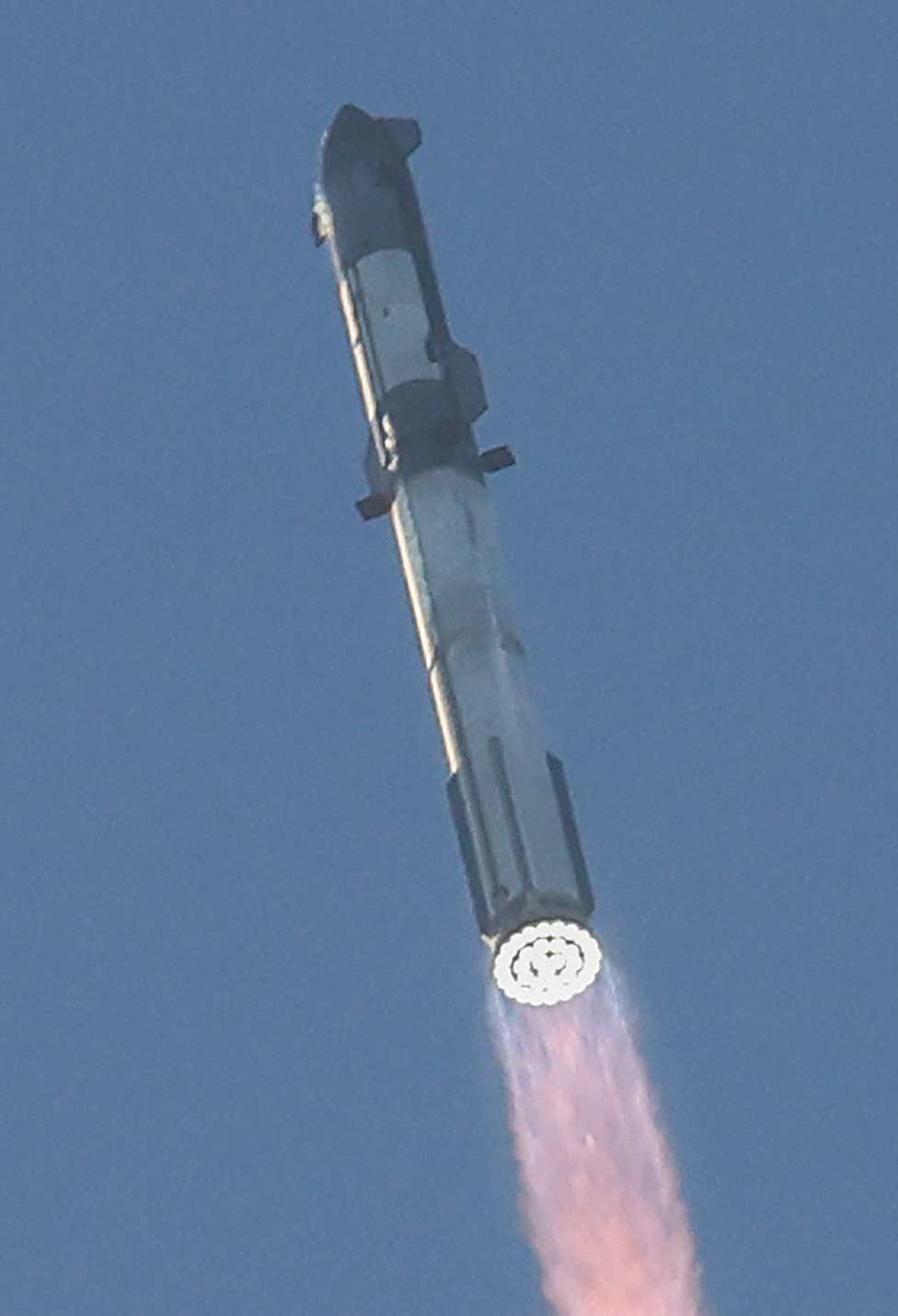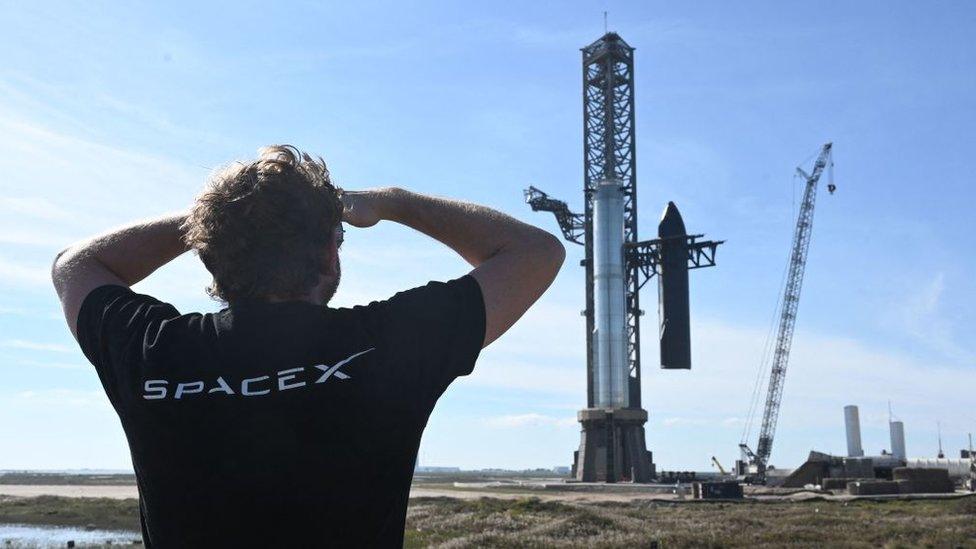SpaceX rocket: Success and then failure for latest launch
- Published
- comments
Watch: SpaceX's Starship goes further and higher on its second test flight
There was success and then failure for a rocket that could one day take people to the Moon and Mars.
Called Starship, the rocket didn't have anyone onboard and is the most powerful ever built by private space-company SpaceX, owned by businessman Elon Musk.
But following a successful lift-off, contact was lost after eight minutes, just as the craft reached space.
The launch was the rocket's second test flight, the first in April ended in disaster after the giant rocket system, blew up just four minutes after launch.
This time, although not completely successful, the rocket still managed to go further and higher than before.
WATCH: Elon Musk’s Starship was launched back in April, but exploded after the booster failed to separate
What was the plan?

Large crowds had gathered on the Texas coast to watch the launch
The Starship rocket, which is made-up of two parts, launched from Boca Chica on the Texan coast in the United States just after 7am local time (1pm in the UK) on what was planned to be a 90-minute mission.
The hope was to get the top section of the rocket - a 50m-tall (165ft) part of the craft called "the Ship" - to reach space and achieve a near-complete journey in orbit around the Earth.
But, it didn't make it that far.
What happened?

The early phases of flight seemed to go to plan
Normally, when a rocket returns to Earth, most of it burns up when it hits the planet's atmosphere.
However Starship's bottom section, called the Super Heavy booster is designed to be completely reusable, so after separating from the top part of the rocket, it's meant to be able land safely back on Earth.
But that was the first thing to go wrong, as shortly after separation, the booster exploded.
The second thing to go wrong saw the top section of the rocket reach space, only to lose contact with the SpaceX team on the ground.
After contact was lost, onboard computers deliberately caused the rocket to self destruct so that any debris from the explosion would land in the ocean and not in areas where people live.
Not a complete failure

The booster did its main job of getting the top part of the rocket off the ground, but then exploded after separation
Providing commentary of the flight online, Kate Tice from Space X said: "It's such an incredibly successful day, even though we did have a 'rapid unscheduled disassembly' of both the Super Heavy booster and the Ship.
"That's great. We got so much data and that will all help us to improve for our next flight."
The company was also congratulated on its efforts by the American space agency, Nasa.
Nasa chief Bill Nelson tweeted: "Spaceflight is a bold adventure demanding a can-do spirit and daring innovation. Today's test is an opportunity to learn - then fly again."
Nasa wants to use a version of Starship to land humans on the Moon later this decade.
- Published17 November 2023

